British Pound: Trouble Ahead for Poor Old Sterling as Euro-to-Dollar Rate Stirs
- Written by: James Skinner
- GBP/EUR limps into weekend as EUR/USD rate stirs.
- Things could get ugly as GBP/USD, EUR/USD diverge.
- EUR bears throwing in towel could lift EUR/USD further.
- Weighing heavily on GBP/EUR as headwinds mount.
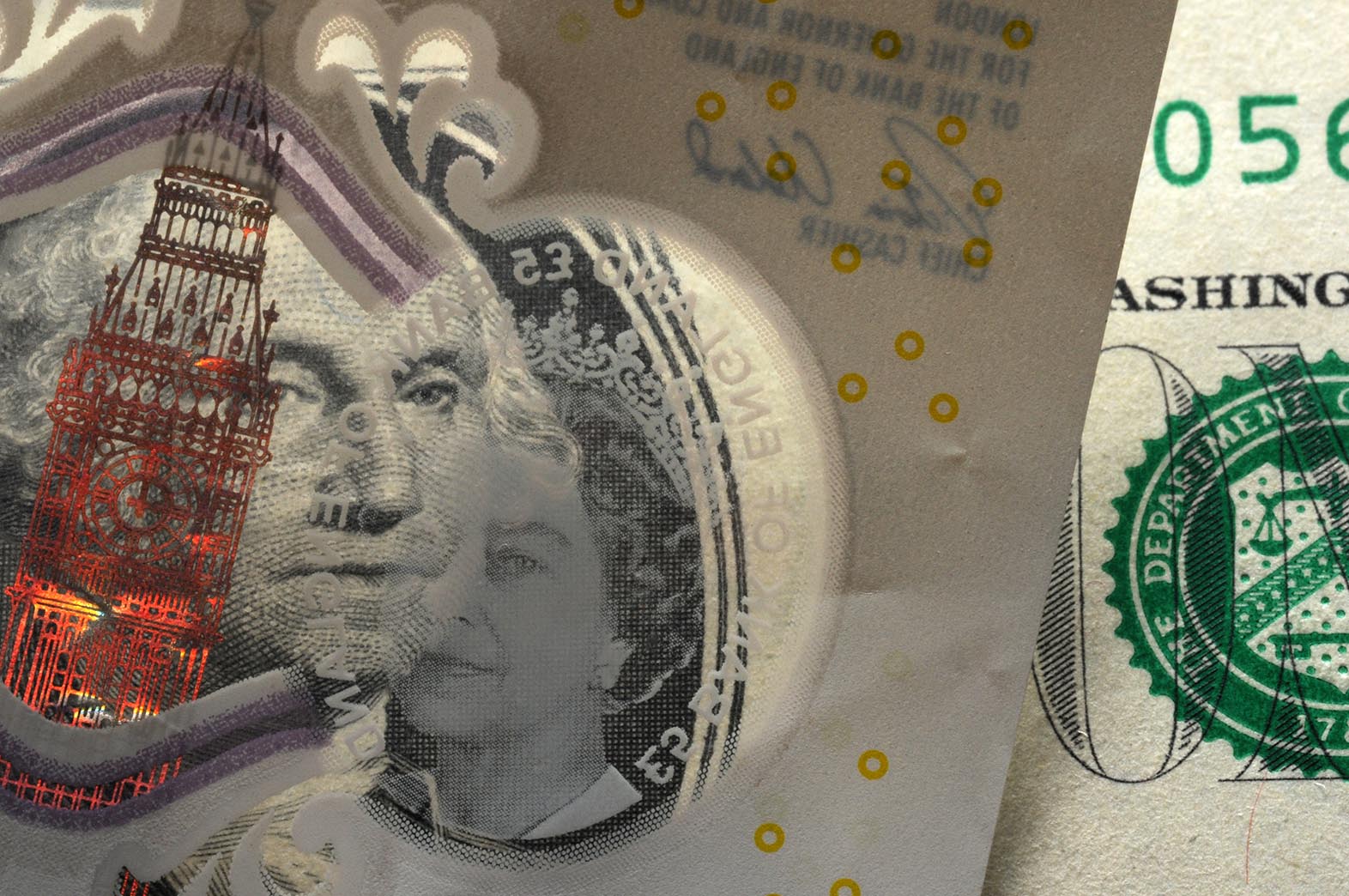
Image © Adobe Images
- GBP/EUR spot: 1.1090 | GBP/USD spot: 1.2308
- GBP/EUR bank rates: 1.0880 | GBP/USD bank rates: 1.2060
- GBP/EUR specialist rates: 1.0990 | GBP/USD specialist rates: 1.2200
- Find out more about the above
The Pound-to-Euro rate limped into the weekend as the British currency slipped while Europe's unified unit broke to the upside from a stifling multi-month range although things could get ugly for Sterling if EUR/USD and GBP/USD continue to diverge from each other in the days and weeks ahead.
Sterling was lower against many rivals during the final session of the week as "month-end flows" helped paint a mixed picture in the major currency sphere, with the London unit having largely overlooked Taoiseach Leo Varadkar's reported suggestion that it might be time to begin preparing for a 'no deal' Brexit again. That was picked up after the EU's Stefaan De Rynck was quoted saying it will not review the mandate of negotiator Michel Barnier.
Friday's comments came ahead of the fourth round of Brexit trade talks that start Monday, with only "limited progress" and discontent achieved so far in the talks, and as a soft deadline for extending the transition period looms at the end of June. Prime Minister Boris Johnson will also take stock of the talks next month before choosing whether to continue with them or resume preparations for a trade relationship governed by World Trade Organization terms.
Friday's comments didn't trouble Sterling as much as the increase in the EUR/USD rate, which has risen for five days on the bounce as the market fell out of love with the greenback while celebrating a European Commission proposal for a €750bn coronavirus recovery fund. This has seen a collection of voices and participants throw in the towel on bearish forecasts and wagers against the single currency.
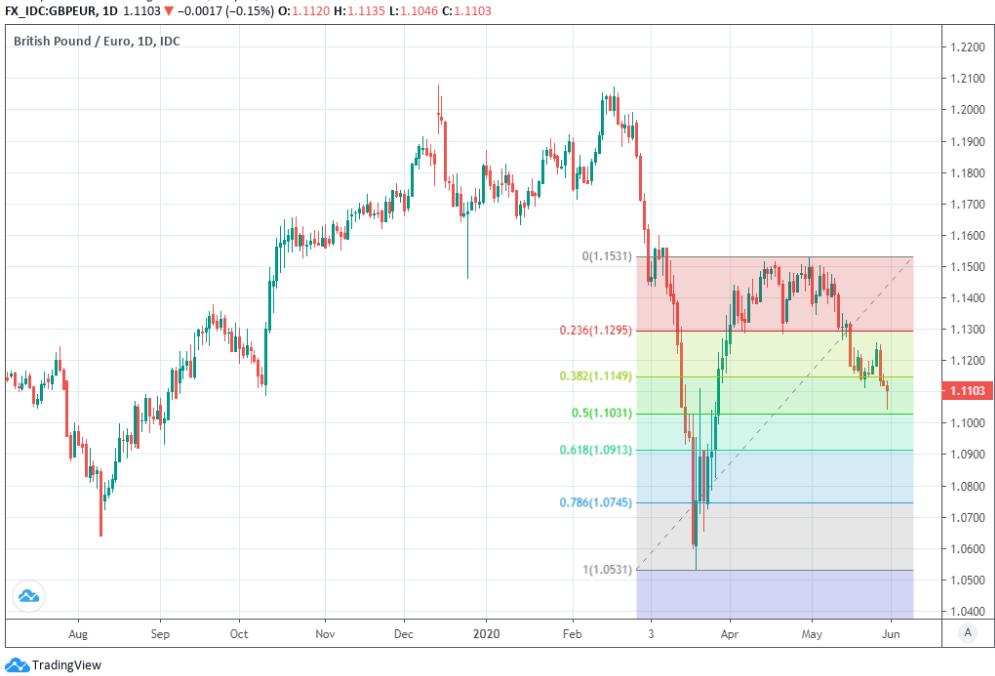
Above: Pound-to-Euro rate at daily intervals with Fibonacci retracements of March-to-April rebound.
That's a problem for the Pound and one that could grow larger over the coming days and weeks because relative price action in GBP/USD and EUR/USD is what drives the GBP/EUR exchange rate, and the market's appetite for the single currency is now growing and at a point when the Pound is increasingly lagging every other currency
The Euro overcame its 200-day moving-average Thursday and was on course for a close above its 55-week moving-average at 1.1064 Friday, a level it hasn't traded above since early 2018 when the U.S.-China trade war first broke out, except briefly when the coronavirus-related collapse of emerging markets lifted the Euro by 6% between March and April. And a good portion of the analyst community now favours further gains ahead.
"EUR/USD has at long last taken out the 200 day ma and its current May high at 1.1012/19 with gusto. The close above here should be enough to regenerate upside interest to the 1.1240 December peak and beyond," says Karen Jones, head of technical analysis for currencies, commodities and bonds at Commerzbank, who's been betting on lift-off having bought the Euro at 1.09 and who also tips 1.1332 as a short-term possibility. "We have a confirmed buy signal on the DMI Index and now look for a move higher."
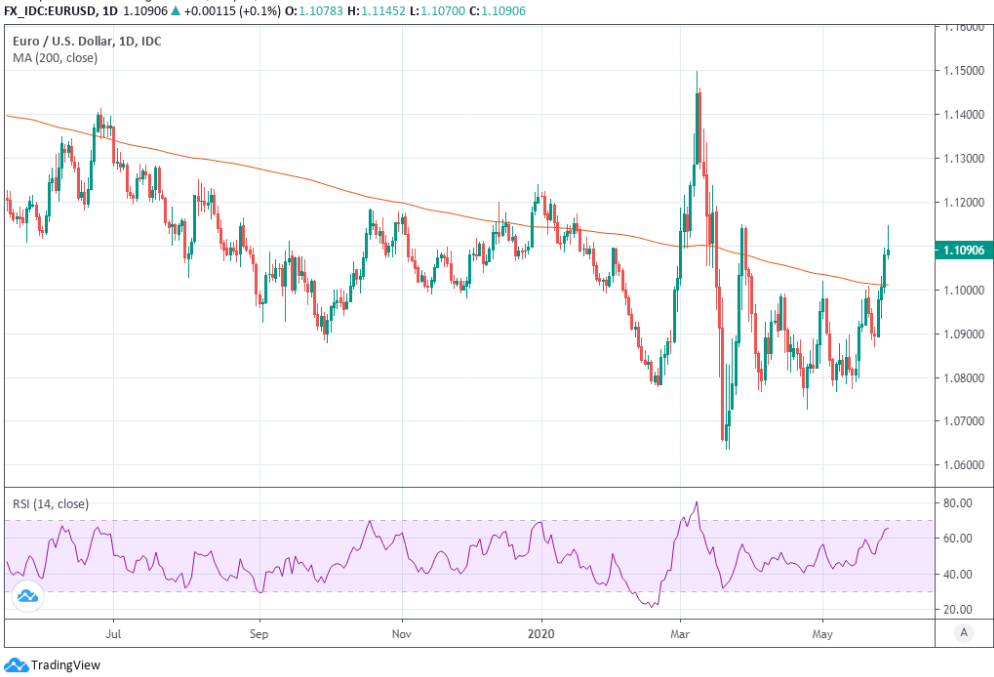
Above: Euro-to-Dollar rate ovecomes 20o-day moving average amid five days of back-to-back gains.
"Sterling's by far the worst of the major currencies this month and while that opens the way for month-end short-covering, Andrew Bailey reasserts the MPC's readiness to act further in the Guardian. He's keeping the negative rate debate alive. Meanwhile, the FT focuses on the UK having the highest ‘excess death' toll of the countries which publish detailed statistics, and all the papers discuss the Government's problems," says Kit Juckes, chief FX strategist at Societe Generale in a Thursday research note. "Sterling's only support is the size of the short positions and thin month-end markets magnify that support, but that doesn't change the fundamentals."
Meanwhile, the outlook for Sterling decidedly bearish and could become more so if the Pound-to-Dollar rate continues to diverge from the S&P 500 stock index. Sterling moved in lockstep with the S&P until late April but has since begun to diverge away from it only to converge with things like the NASDAQ Global Banks Index and (worse) the NASDAQ UK Banks Index.
The Pound-to-Dollar rate might end up somewhere between 1.20 and 1.16 if it continues in the direction of bank stocks - often billed as terrible investments by even the analysts who cover them - and it just might do that if the Bank of England (BoE) gets serious about a move to negative interest rates next month or PM Johnson and his EU counterparts call off the trade talks in favour of renewed 'no deal Brexit' preparations.
That would make an even more ugly environment for Sterling if accompanied by a EUR/USD rate of 1.1150, which is the midpoint between a new HSBC forecast and the price target a trade entered by Nomura on Friday. Both have changed their views on the single currency and the midpoint of the two targets would prompt losses for GBP/EUR unless GBP/USD can keep pace with EUR/USD during the same period.
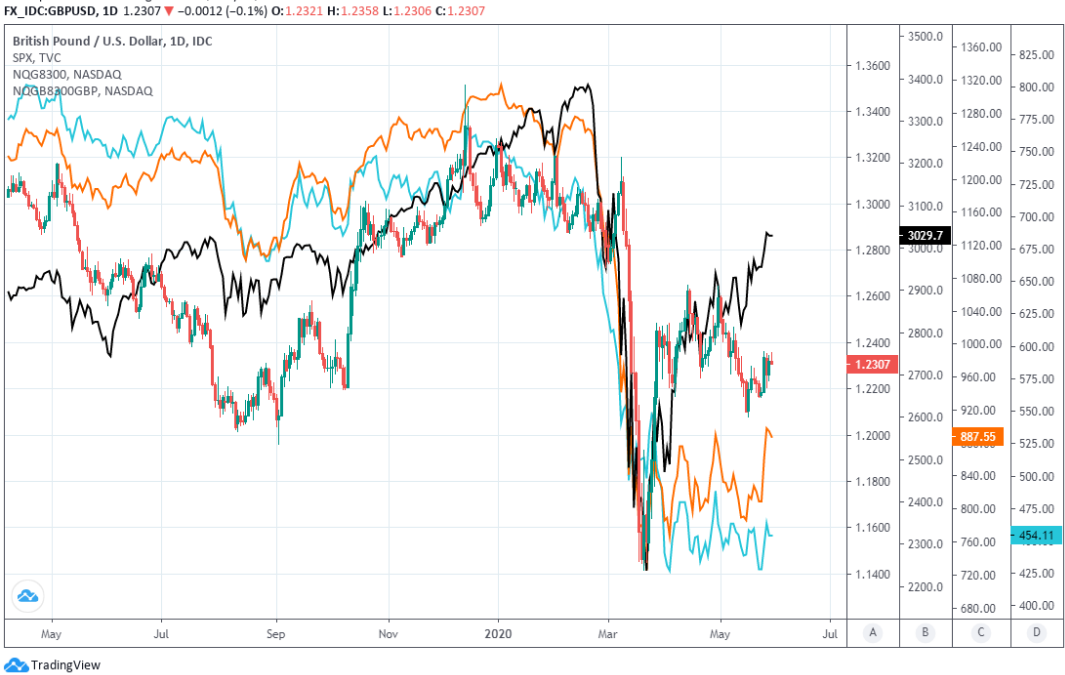
Above: Pound-to-Dollar rate with S&P (black line), NASDAQ Global Banks (orange) and NASDAQ UK banks (blue line).
The Pound-to-Euro rate would fall to 1.1042 in the unlikely event that GBP/USD remained at Friday's 1.2312 level, which would leave the Pound perched on the 50% Fibonacci retracement of its March-to-April recovery rally at 1.1031. But exchange rates never sit still except for at the weekends and Sterling was unable to capitalise this week on the Dollar's worst five-day period of trading since early April, which came in what was mostly a risk-happy period.
A Pound-to-Dollar rate that falls back to 1.20 over the coming weeks, as many say it could, would knock the Pound-to-Euro rate down to 1.0762 and leave it not far above the 78.6% retracement of the March-April recovery trend if accompanied by a EUR/USD rate of 1.1150. Furthermore a Pound-to-Dollar rate that limps all the way back to 1.18, the midpoint between the levels implied by those two bank stock indices, would leave Sterling at 1.0582 against the Euro and at more or less its March crisis-period low.
However, the last time that Brexit weighed on the British currency it underperformed those bank stock indices while the Euro, as much as it may be prone to sitting in stiflingly narrow ranges for months at a time, can also cover a great deal of ground in a very short space of time when it gets going. This could mean the upside for EUR/USD is larger than analysts' current targets suggest and, or, likewise with the downside for GBP/USD and its Europe facing sibling.
"EUR/GBP is underpinned near term by the 55 day ma at .8879 and continues to probe the psychological resistance at .9000, this is now considered to be exposed. We view the market as having recently based and our target remains .9060," Jones says, tipping the Pound-to-Euro rate for a move to 1.1037.
Jones and her colleague Axel Rudolph also say there's scope for the Pound to fall to 1.02 over the next three weeks or so, which would leave Sterling at its lowest level since the darkest days of 2008 financial crisis that clobbered the Pound and its jolly big banking sector much more so than it did the Euro.
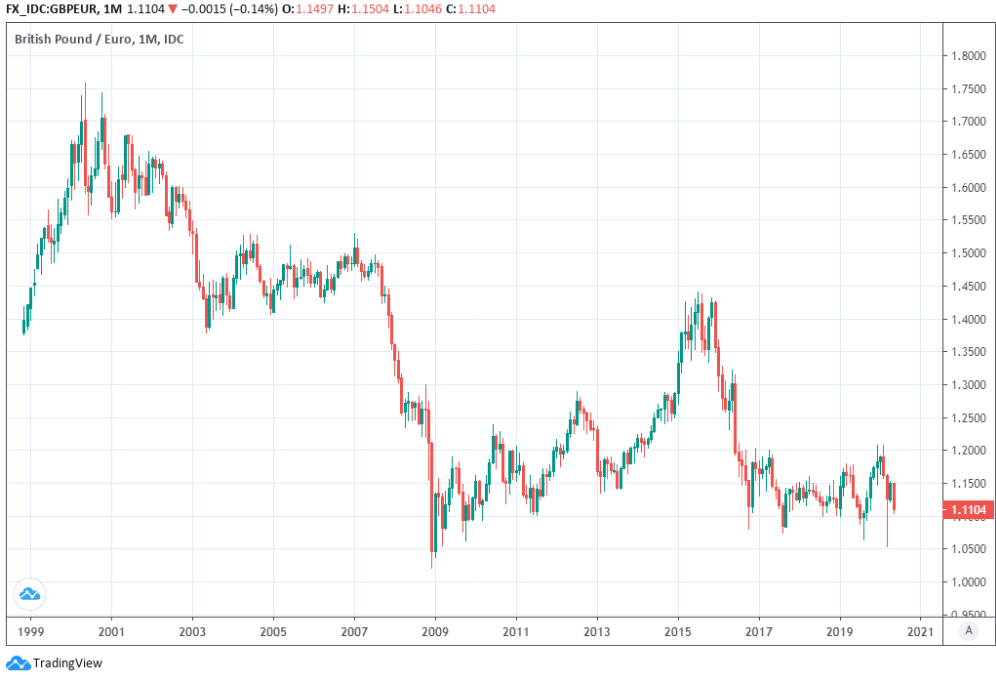
Above: Pound-to-Euro rate at monthly intervals.




